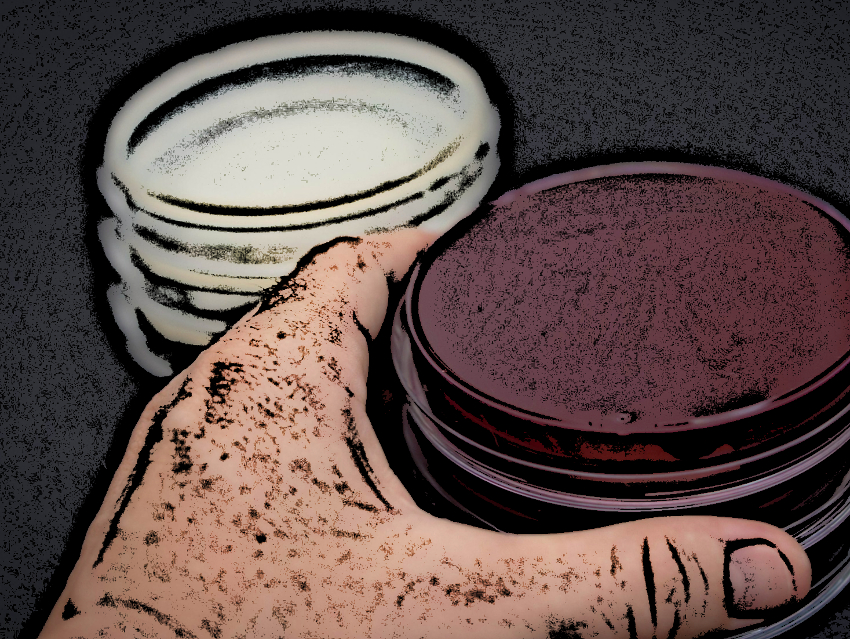To combat the current outbreak of COVID-19, a respiratory disease caused by the coronavirus SARS-CoV-2, researchers are investigating the virus intensely. Since viruses cannot replicate on their own, cell lines are needed as hosts to allow scientists to isolate and study the viruses. SARS-CoV-2 can be isolated using the cell lines VeroE6 (kidney epithelial cells from monkeys), Huh7 (human liver cells), or human airway epithelial cells.
Shutoku Matsuyama, Makoto Takeda, National Institute of Infectious Diseases, Tokyo, Japan, and colleagues have found that genetically modified VeroE6 cell lines are highly susceptible to infection by SARS-CoV-2, which would make them particularly useful to isolate the virus. The cells are modified to express large amounts of the enzyme TMPRSS2 (transmembrane protease serine 2) and are called VeroE6/TMPRSS2. The researchers used samples from seven COVID-19 patients to inoculate the VeroE6/TMPRSS2 cells with the virus. Then they observed the cell cultures for structural changes that are signs of viral infection, determined virus titers in the cell cultures, and used electron microscopy to detect coronavirus particles.
The team found that VeroE6/TMPRSS2 cells perform better than other cell lines for SARS-CoV-2 isolation. VeroE6/TMPRSS2 displayed a tenfold greater number of SARS-CoV-2–infected cells than unmodified VeroE6 cells. The study also suggests that TMPRSS2 may play an important role in SARS-CoV-2 entering the host cells. Studies on the related SARS virus SARS-CoV-1 support this conclusion. Thus, TMPRSS2 could be a target for drug development against coronaviruses.
- Enhanced isolation of SARS-CoV-2 by TMPRSS2-expressing cells,
Shutoku Matsuyama, Naganori Nao, Kazuya Shirato, Miyuki Kawase, Shinji Saito, Ikuyo Takayama, Noriyo Nagata, Tsuyoshi Sekizuka, Hiroshi Katoh, Fumihiro Kato, Masafumi Sakata, Maino Tahara, Satoshi Kutsuna, Norio Ohmagari, Makoto Kuroda, Tadaki Suzuki, Tsutomu Kageyama, Makoto Takeda,
Proc. Natl. Acad. Sci. 2020.
https://doi.org/10.1073/pnas.2002589117
Also of Interest
- How Long Can the SARS-Cov-2 Virus Live on Surfaces and in Aerosols?,
ChemistryViews.org 2020.
New results on the stability of the virus causing COVID-19 - Structure of Coronavirus Receptor on Human Cells Determined,
ChemistryViews.org 2020.
Cryo-EM structures of full-length human angiotensin-converting enzyme 2 (ACE2) - α-Ketoamides Keep Different Viruses from Multiplying,
ChemistryViews.org 2020.
New broad-spectrum antivirals against coronaviruses and enteroviruses - Clever Picture: Coronavirus Entering and Replicating in a Host Cell,
Vera Koester,
ChemViews Mag. 2020.
https://doi.org/10.1002/chemv.202000018
Where the coronavirus comes from and how it infects the human body - Structure of “Spike” Protein in New Coronavirus Determined,
ChemistryViews.org 2020.
Results could help to develop a vaccine and antibody treatments - Antiviral Drug Shows Promise Against MERS Coronavirus,
ChemistryViews.org 2020.
The broad-acting drug remdesivir could also be useful against the current coronavirus disease (COVID-19) - How Long Can Coronaviruses Live on Surfaces?,
ChemistryViews.org 2020.
Literature review finds coronaviruses could persist on hard surfaces for up to nine days, but can be killed with the right disinfectant - Suggesting Potential Drug Candidates for Coronavirus,
ChemViews Mag. 2020.
Summarizing the current research and suggesting potential drug candidates for treating patients suffering from the 2019-nCoV acute respiratory disease
- LitCovid
Curated literature hub for tracking up-to-date scientific information about COVID-19 - Many publishers and other entities have signed a joint statement to ensure that COVID-19 research findings and data are shared rapidly and openly



